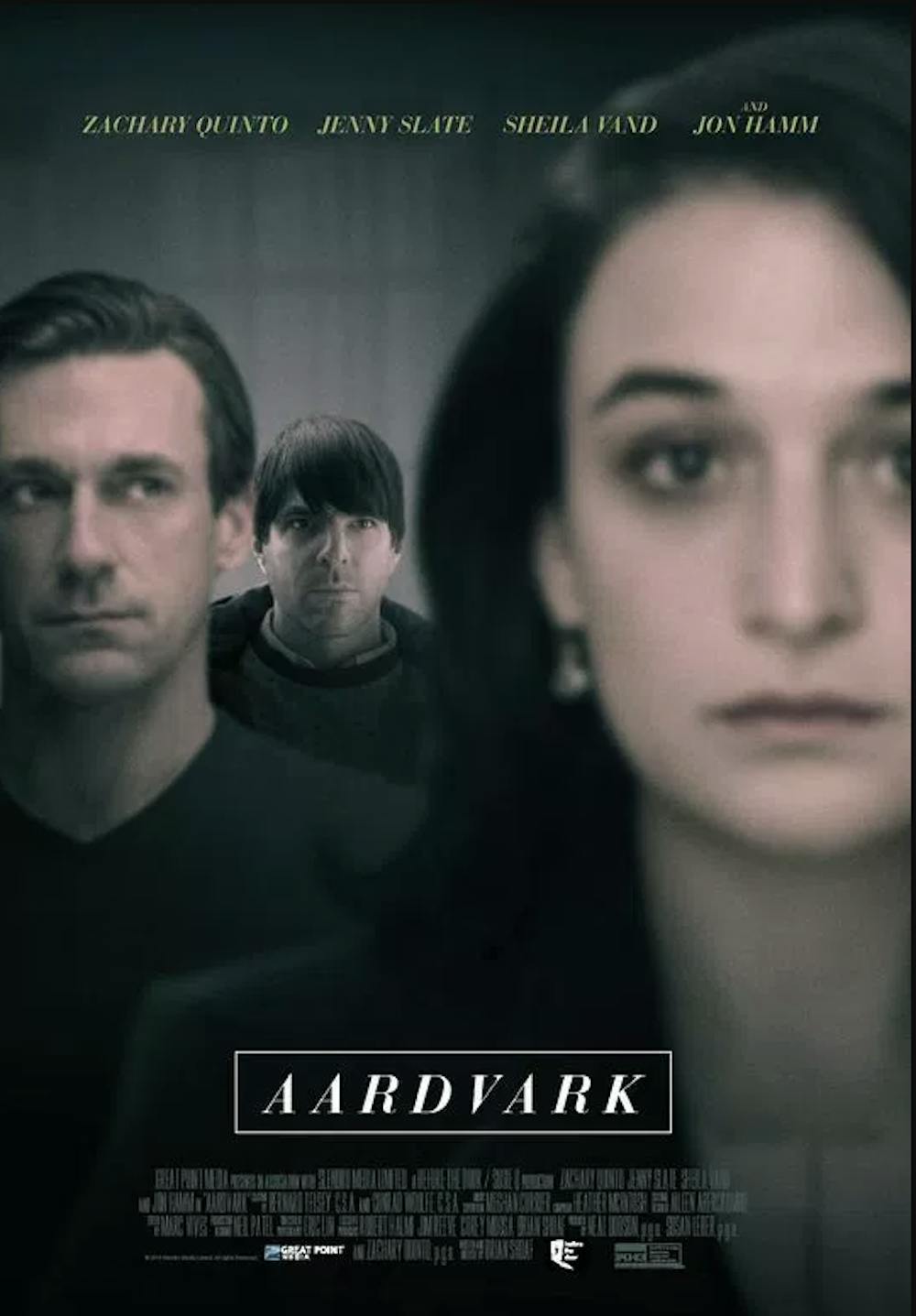A schizophrenic character is not one that most of us can identify with, but there is still one scene in Aardvark that I found relatable. After Josh’s (Zachary Quinto, in the main role) therapist fails to do her job—and fails so hard that it would be almost comical, if her job wasn’t facilitating the treatment of mental illnesses—he gets up furiously and shouts “You charge for this?” voicing my exact thoughts on what I had been watching for an hour.
At that point, Aardvark—kitschy, slow, incoherent, and laughably absurd—had already been past the point of redemption for a while. I would have recreated this scene in the movie theater—hoping for a refund, perhaps—had I not watched the film in bed, but storming out of my own room would have been as pointless as Aardvark itself. It would have also produced precisely the same dramatic effect—none.

Aardvark is the story of Josh, a man who seeks help from Emily (Jenny Slate)—a therapist he had found online—after he hears that his brother Craig (Jon Hamm), a famous actor, is back in town after years of absence. It’s clear from the start that Josh is terribly unstable—he is seemingly haunted by his brother, with whom he hadn’t been in contact for a long time, and only saw him on TV, as the characters he plays. His therapist seems unfazed, and at times, it seems like the roles are inversed: Josh takes advantage of Emily’s main weakness—loneliness—and toys with her mind; Emily breaks down, shudders a bit too frequently, and speaks in a shaky voice. What’s not clear is whether or not the director and writer Brian Shoaf is aware of the fact that Emily is entirely incompetent—in which case, the purpose of his choice remains vague.
Indeed, Emily’s loneliness is used as a plot device when she starts having what looks like unexciting sex with the otherwise dashing Craig, whose bed she jumps into almost immediately after meeting him. Her shudders turn into giggles and the puffiness around her eyes is gone—which would be exciting if the quality of her work improved. It’s not that Josh makes it hard for her to realize that he needs help immediately: he tells her about all of the drugs he’s prescribed for a variety of conditions, and also confesses to hallucinating. At times, Josh becomes aggressive, and his outbursts should have been a massive red flag for anyone paying attention. But Emily’s questions—from the basic “does that bother you?” to the almost scarily inefficient “how do you feel about that?”—are uninspired to the point where they are concerning.
Predictably, Josh ends up in a hospital, and thankfully the diagnosis seems clear to the doctors on duty: severe schizophrenia. Josh is on so many different medications that even a painkiller might be too much for him to handle—and when Emily is asked why she hasn’t done anything to help her patient, she feels offended and starts screaming at the doctor. Though the movie seems to aim for the thought–provoking, puzzle–like psychological subgenre, all it manages to do is serve as a reminder not to look up therapists on Yelp.
The melodramatic atmosphere doesn’t help either and, too often, Aardvark’s multiple plot lines, film school–level shooting style, and kitschy editing (that looks like it was done in iMovie) make it reminiscent of a soap opera—which wouldn’t necessarily be bothersome if Aardvark had been marketed as such. The motif of the aardvark is the movie’s wannabe artsy element, but remains ambiguous—and the multiple intermezzos in which the animal is shown seem to serve one purpose only: giving the audience a break from the cinematic mess they’re witnessing. Perhaps that is ultimately its purpose, in which case Brian Shoaf deserves some credit for his thoughtfulness, if nothing else.
Rating: 1/5
‘Aardvark’ is currently showing at Ritz at the Bourse. Check showtimes and buy tickets here.

